|
Hammond Electric Bridge Table |
||
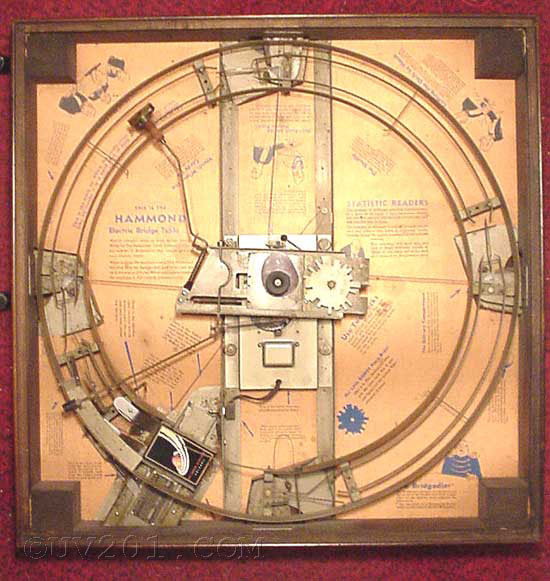 |
||
| The Hammond Model 4H Electric Bridge Table
is not a clock, obviously, but it was made by the Hammond Clock Company
in 1932. Concealed within the table is a mechanism that will automatically
deal four 13-card bridge hands without the need for
shuffling.
The card deck is placed in the deck tray visible at the lower left corner in the above picture. Pushing in this tray activates an electric motor. As the mechanism turns (clockwise, of course), an arm bearing a rubber "thumb" swings around (seen at 11 o'clock in the picture). As it nears the tray containing the cards, it dips down and pulls the top card up a ramp onto the circular track. A second arm (seen at 8 o'clock) hooks the card and carries it around the track. The mechanism in the center "decides" which of the four hands will get the card. The serrated wheel has notches cut to three depths in 52 positions. The depth of the notch determines the destination hand. Each full deal cycle requires 53 rotations of the mechanism, so each deal is begun from a different point in the pattern. Hammond called this the "robot". This process continues until the last card is dealt and the motor automatically shuts off. Each rotation takes about 1 second, so the full deal takes just under one minute. The cardboard cover below the mechanism is printed with instructions and information about how the table works, some of which are shown below. The mechanism actually works quite well, though the condition of the rubber "thumb" is critical, and it doesn't like damaged, bent, or very slippery cards. This device was an expensive and unnecessary gadget when it was introduced, and one that could only have appealed to the rich and bored of the day. One can imagine a Sunday afternoon bridge party of overweight matrons erupting into heated arguments and accusations of cheating over an occasional misdeal. The general public, however, was not receptive, and it did not sell well. |
||
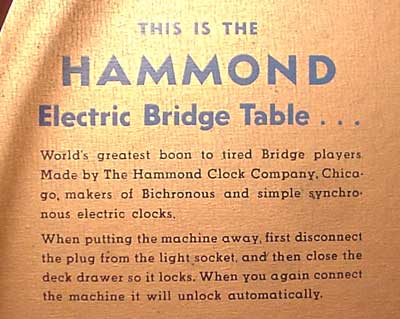 |
||
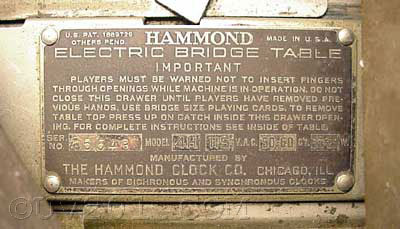 |
||
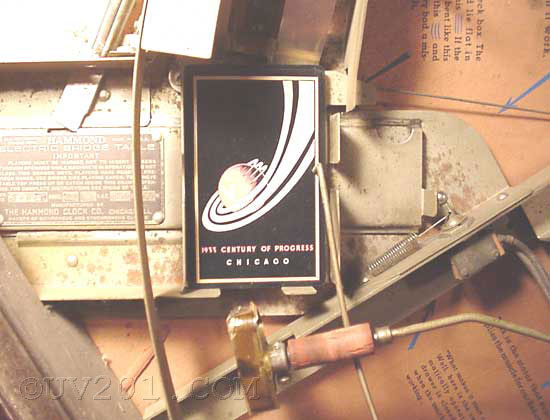 |
||
| This picture shows a deck of period cards in the tray. Just below the cards is the "thumb", as it is positioned just before it picks up the top card. | ||
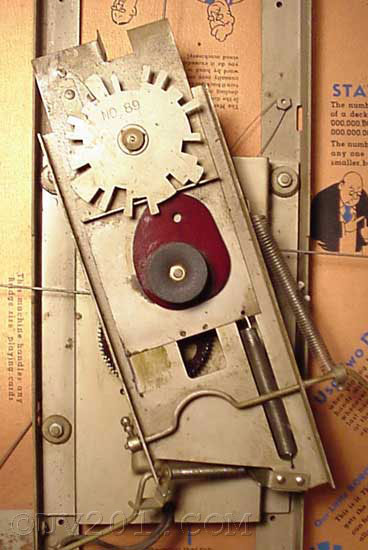 |
||
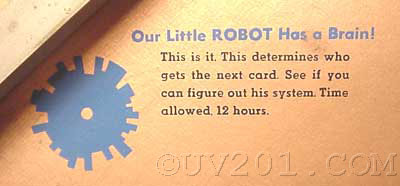 |
||
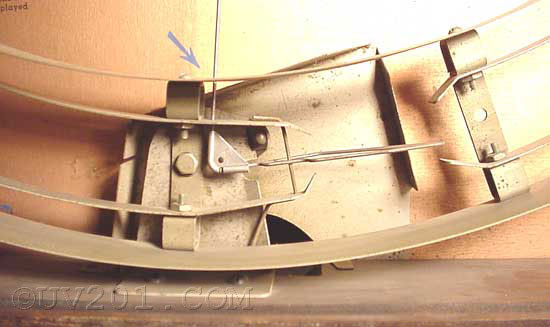 |
||
| One of the receiving trays. The rod at the top is rotated causing a wire "finger" to be lifted. The card, arriving from the right side, is snagged and dropped into the tray. | ||
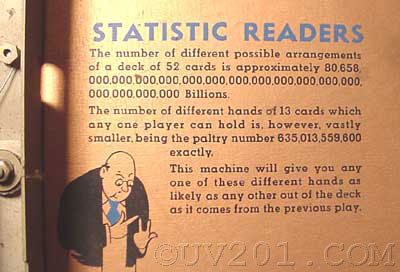 |
||
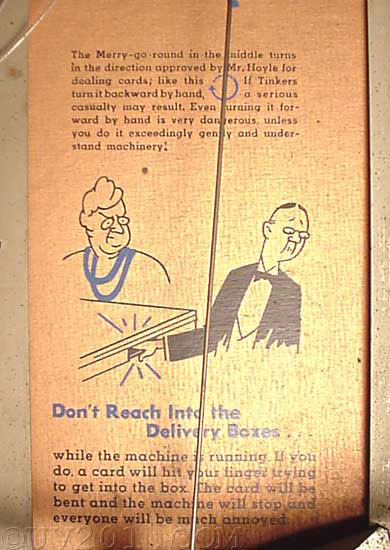 |
||